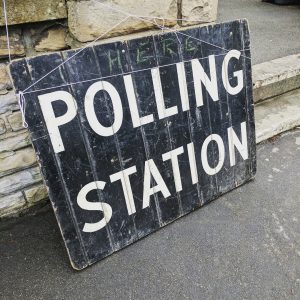Guide to the 2019 Canadian Federal Election: Polling and Voting
 Election day is about two weeks away now and many poll results or ongoing polls are being broadcasted to voters.
Election day is about two weeks away now and many poll results or ongoing polls are being broadcasted to voters.
This can be scary for many as it may seem like there is clear winner even before any voting has taken place. It’s important to know how polls work, what they represent, and how your vote actually counts in order to make the most of your vote.
In Canada, our federal election requires people to vote for an MLA that will represent their electoral district in the House of Commons.
While each vote is for a representative, generally the political party that has the most amount of members voted into the House of Commons will win the election and their leader will become the Prime Minister.
When voting, you can decide to vote for a representative based on their individual views, values, and plans and how you believe they could incite change in the House of Commons. Alternatively, and what seems to be more common, you can vote for a representative based on the party they represent and what that party’s platform (and who their leader) is.
As the election approaches you may start hearing about polls. Polls can be a useful tool but they can also be rather deceptive.
Polling companies try to acquire a wide range of demographics when polling to accurately represent the general opinion. However, often times polls represent a very small and very specific demographic.
The proportion of the population that responds to polls today is less than 1 in 10.This means that while the latest polls (as of Oct. 5th) show the Liberals and the Conservatives at around 35% with a few points separating them, it’s not necessarily representative of how the overall population will vote. This is because people who are answering polls are a small and specific group. Responding to a poll is also not the same as casting a ballot. Some people may change their mind in between answering a poll and actually voting.
 Some people may use polls to implement something called “strategic voting.” This refers to making a decision about who to vote for depending on who seems more likely to win according to polls and other research.
Some people may use polls to implement something called “strategic voting.” This refers to making a decision about who to vote for depending on who seems more likely to win according to polls and other research.
In the 2015 election there was a surge in “strategic voting” and many opted to vote for the Liberal Party instead of the party they truly believed in simply to ensure the Conservative Party wouldn’t win the majority.
This is a result of the outdated first-past-the-post system which makes many voters feel like their vote doesn’t count. But strategic voting is also controversial and it doesn’t have to be the only way to feel represented. If you vote for a representative who supports the causes and values you care about you may be able to have those values represented in the House of Commons if they are elected in.
 What I hope the takeaway here is that regardless of what the polls say, what your family might believe, or what news outlets may be broadcasting, your vote should be cast only after you are as informed as you can be.
What I hope the takeaway here is that regardless of what the polls say, what your family might believe, or what news outlets may be broadcasting, your vote should be cast only after you are as informed as you can be.
This may mean listening the Leader’s Debate (which will take place on October 7th.). It could mean having conversations with Indigenous people, people of colour, immigrants, members of the LGBTQ+ community and other systematically discriminated against people to understand how this election could affect them.
 It could mean reading thoroughly through every party’s platform. It could mean attending talks by local representatives. It could mean all of these things and/or a lot of other methods I have not mentioned. Regardless of how you conduct your research, you should ensure you are completely informed and confident in your decision.
It could mean reading thoroughly through every party’s platform. It could mean attending talks by local representatives. It could mean all of these things and/or a lot of other methods I have not mentioned. Regardless of how you conduct your research, you should ensure you are completely informed and confident in your decision.
Good luck in your research and voting! Please drop a comment if you need any further resources and I will be happy to help you.
Author’s note: I would like to acknowledge that I will never be completely objective in my writing. My views and biases will bleed into my research and my work. Take my writing with a grain of salt and be sure to conduct your own research when making your decision.




